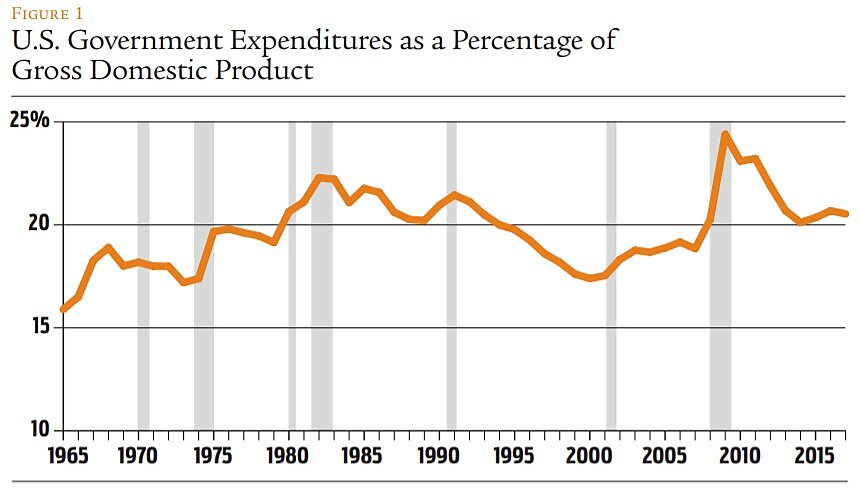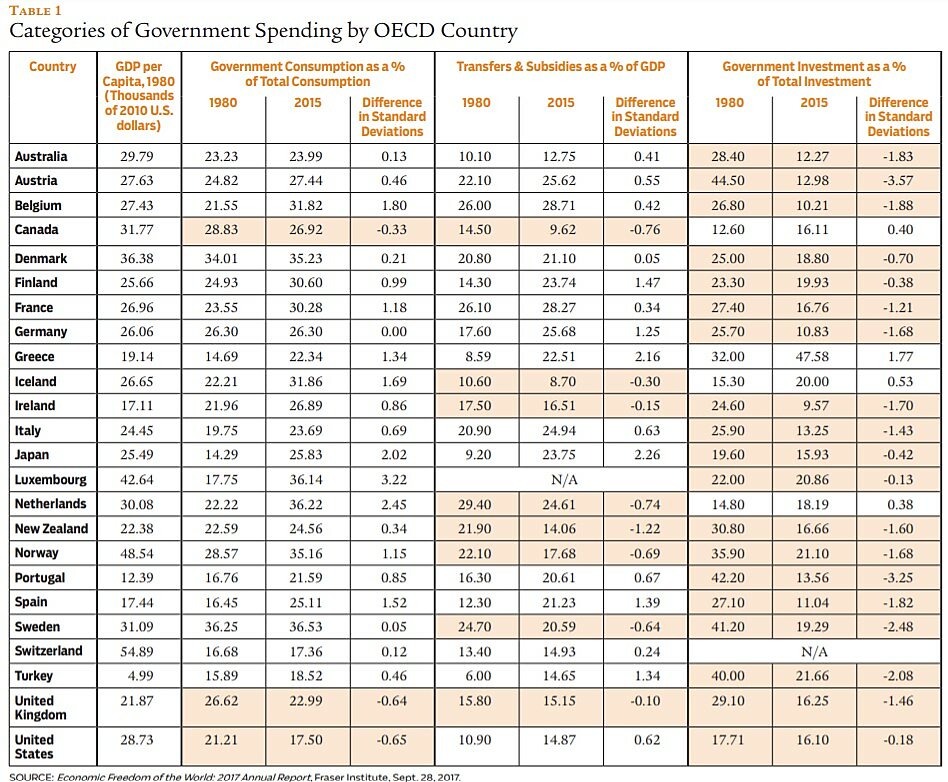One explanation is that many of the goods that governments spend money on are, in technical terms, superior goods, meaning that when you are wealthier, you buy more of them as a percentage of your income. Others posit that public investments in education and health contribute to economic growth by improving productivity, which in turn increases gross domestic product per capita. Alternatively, wealthier countries are able to “buy” more of something called “state capacity,” which is what academics call the ability of governments to accomplish what they set out to accomplish. Half of this is clearly a good thing because it means higher quality courts and legal systems. But the other side of state capacity is fiscal capacity, which is the ability of governments to raise tax revenue, and thus grow the government through that mechanism.
Wagner’s Law, named for turn-of-the-20th century economist Adolph Wagner, posits a direct correlation between a society’s wealth and the size of its government. If Wagner’s Law generally holds, it could lead to a certain amount of defeatism among free-marketers and other advocates of smaller government. Over the long term, total government spending has comprised a growing percentage of U.S. gross domestic product, as depicted in Figure 1. Inevitably increasing public spending is one possible reading of Robert Higgs’s “ratchet effect” found in his classic work Crisis and Leviathan, where crises ratchet up the size and scope of government under “emergency” provisions, but public spending never returns to pre-crisis levels once the emergency ends. More recently, Will Wilkinson of the Niskanen Center proclaimed, “There’s simply no path here to smaller government [for the United States].”
But Wagner’s Law, if stated as literally true and inevitable, is wrong. There are periods of time in which national income increases but government spending as a percentage of GDP falls, as reflected in the early- to mid-1980s and mid- to late-1990s in Figure 1. The issue, then, is of degree: how frequently can government spending fall in the long run in wealthy countries, and by how much?
International data / To get a sense of how often wealthy countries violate Wagner’s Law over time, one can look at how often governments cut the size of their states in the very long run. I did this using data from the most recent Economic Freedom of the World report published by the Fraser Institute (along with other Economic Freedom Network think tanks, including the Cato Institute). The specific data I examined were:
- government consumption—that is, government spending on goods and services used for direct satisfaction—as a percentage of all consumption
- transfers and subsidies as a percentage of economic output
- government investment—that is, government spending on productive assets—as a percentage of all investment
Country tables in the current edition of the Economic Freedom of the World report provide data for the years 1980 and 2015, so those are the years I compared for this research.
Table 1 lists the 24 members of the Organization for Economic Cooperation and Development in 1990, along with their GDP per capita in 1980 (in 2010 U.S. dollars). Three sets of columns give the three measures of government spending listed above in both 1980 and 2015. If the strong version of Wagner’s Law were to hold, the 1980 figures would always be smaller than their 2015 counterparts. Government consumption and spending on transfers and subsidies are the clearer tests of the hypothesis, although all three measures should be given some weight if Wagner’s Law is to mean that increases in the size of government are inevitable.
These measures of government spending differ in terms of how much they each vary across countries. A change of five percentage points represents a greater change for one type of government spending than another. To better express how big the changes that occurred in government spending from 1980 to 2015 really were, I calculated the standard deviation of each variable in 1980. I then divided the change from 1980 to 2015 by this standard deviation. For example, in Belgium, government consumption as a percentage of total consumption increased from 21.55% in 1980 to 31.82% in 2015. As the standard deviation among these countries in 1980 was 5.72%, Belgium’s 10.27% increase corresponds to 1.80 standard deviations.
Table 1 highlights the countries and variables that declined from 1980 to 2015. It does indeed seem difficult to cut government consumption. Of the 24 countries, only three—Canada, the United Kingdom, and the United States—cut government consumption over this time period. The cuts in the UK and the United States were not at all trivial, though, amounting to more than half a standard deviation apiece. Still, if this were the entire story for government spending, it would give some credence to the defeatist story regarding government spending.


